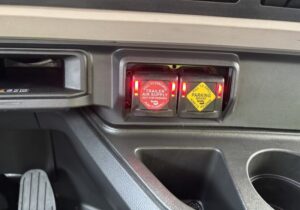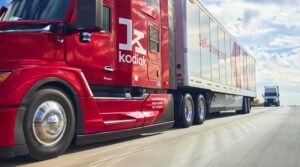It’s no secret that President Donald Trump has made a priority of reversing many of the actions taken by the administration of his predecessor, Joe Biden.
Some of those reversals have dealt with mandates from the Environmental Protection Agency (EPA) concerning greenhouse gas (GHG) emissions and rules governing sales of zero emissions vehicles (ZEVs). Some of the rules are based on recommendations from the California Air Resources Board (CARB) for outright adoption for federal application.
Efforts to modify or eliminate rules changes have come through executive orders and through legislation, and some are being contested in court.
The end results of these reversals and challenges will be especially important to the trucking industry.
Carriers are already trying to navigate confusing rules for future vehicle purchases, including whether to pre-buy tractors ahead of new 2027 emissions standards and whether to invest in battery powered trucks.
Costs for new trucks are expected to rise considerably, which will inflate prices on the used truck market as well.
Trump’s efforts began on his first day in office when he issued an executive order he called “Unleashing American Energy.” That order covered multiple subjects, including a call for the end of “EV mandates,” along with revocation of emissions waivers that allowed California (and potentially other states) to adopt stricter emissions standards than those issued by the EPA, and a freeze of funding authorized by the Inflation Reduction Act and the Infrastructure Investment and Jobs Act.
On April 15, a judge from the Rhode Island District Court ruled that the frozen funds be released, finding that the involved agencies don’t have the authority to freeze funds authorized by congressional action.
Call to Repeal Emissions Standards
On the legislative side, the Transportation Freedom Act was introduced in the U.S. Senate on Feb. 25 by Senator Bernie Moreno, (R-Ohio). It was immediately referred to the Committee on Finance.
The bill calls for the repeal of emissions standards for light- and medium-duty vehicles set to take effect in 2027, the repeal of the EPA GHG standards for heavy-duty vehicles beginning in 2030, and the repeal of sections of the Clean Air Act. The bill also requires the EPA to issue new heavy-duty vehicle standards.
On March 12, the EPA announced a “reconsideration” of its GHG-3 rule that would phase in stronger GHG standards beginning in 2027.
As it stands, sleeper-equipped tractors would not be impacted by the GHG rule until 2030.
The requirement for sleeper-equipped tractors would be a 25% reduction in carbon dioxide emissions by model year 2032. It would require manufacturers of heavy trucks to track fleet averages for all vehicles sold, choosing their own methods of reducing emissions. (For example, selling more electric trucks, adding exhaust aftertreatment systems and use of smaller engines are all methods to reduce emissions.)
If implemented, the new emissions standards are expected to increase the price of each new truck by $30,000 or more. Sales of electric heavy-duty trucks would help bring down fleet averages — but the vehicles’ limited range and lack of a viable charging infrastructure, in addition to the higher costs, make selling them to irregular-route carriers a difficult task.
Another rule being reevaluated by EPA is the 2027 requirement for reduced NOx emissions. Including both nitric oxide and nitrogen dioxide, NOx emissions are a key component of smog and acid rain. Current EPA rules require a reduction of NOx pollutants of more than 80%. Truck manufacturers have mostly announced additional aftertreatment systems to make the reductions possible.
Longer Warranties = Higher Prices
The largest portion of vehicle price increases, however, will come from lengthened vehicle warranties.
The EPA addressed the useful life of each vehicle sold in the NOx ruling, mandating that manufacturers extend the useful life of engines. Warranty periods for heavy-duty engines will increase to a 10-year period, increasing manufacturer costs of maintaining equipment sold.
In the long term, buyers who can expect more years of service from equipment they purchase may find any cost increases to be worth the investment … but a fleet of older trucks won’t help recruit and retain drivers.
Another result of higher new truck prices will be to increase competition for used trucks, driving up prices in that market, too.
Advanced Clean Truck Requirements
Then, there’s California. CARB’s Advanced Clean Truck rule requires manufacturers to include ZEVs in a certain percentage of sales — and that percentage increases each year.
For Class 7-8 tractors, the requirement is that 10% of sales in 2026 be ZEVs, increasing to 30% by 2030 and 40% by 2032.
While the type of ZEV isn’t mandated, currently available technologies such as battery electric, fuel cell electric and hydrogen combustion systems aren’t viable for the vast majority of over-the-road trucking. While breakthroughs are being made all the time, there simply isn’t yet an equivalent for a tractor with a diesel engine and a full fuel tank.
At least 10 other states have adopted the CARB ACT rule for their own jurisdictions.
If the rule is allowed to stand as it is, manufacturers will have a difficult time selling enough ZEVs to meet the requirements in those states — while carriers in those states may not be able to find the trucks they want to buy. Some will need to be creative, moving truck purchases to other states without the ZEV requirements. Undoubtedly, some will move their operating centers to other states as well as registration and licensing activities.
No Clear Answers
Unfortunately, there are no clear answers to the current confusion.
The Trump administration says it’s determined to mitigate potential harm to the industry, claiming that current ZEV technology hasn’t kept pace with new regulations, placing undue harm and expense to the trucking industry.
Environmental advocates, on the other hand, are using the courts to delay or defeat attempts to undo what they see as progress made under the Biden administration.
Who wins may be determined one case at a time, unless Congress pulls together to enact legislation establishing clear and achievable goals for the industry.
In the meantime, the fight to replace diesel internal-combustion engines with a cleaner power source will rage on, with any revised rulings to be subject to further review and revision when the next administration comes to power in Washington.
Cliff Abbott is an experienced commercial vehicle driver and owner-operator who still holds a CDL in his home state of Alabama. In nearly 40 years in trucking, he’s been an instructor and trainer and has managed safety and recruiting operations for several carriers. Having never lost his love of the road, Cliff has written a book and hundreds of songs and has been writing for The Trucker for more than a decade.















